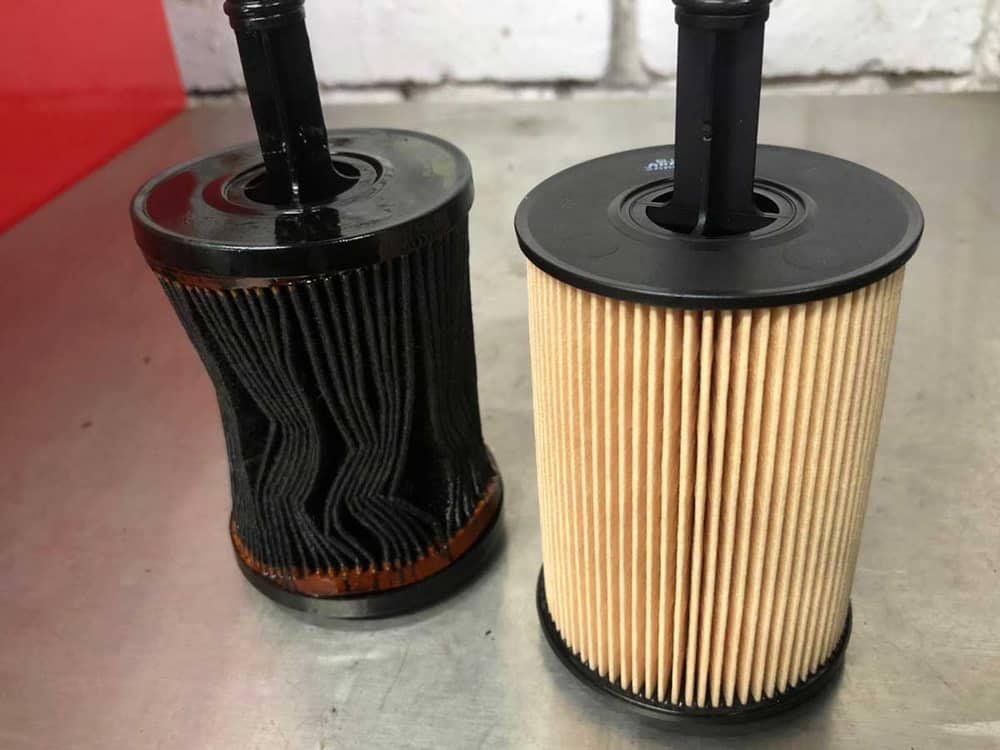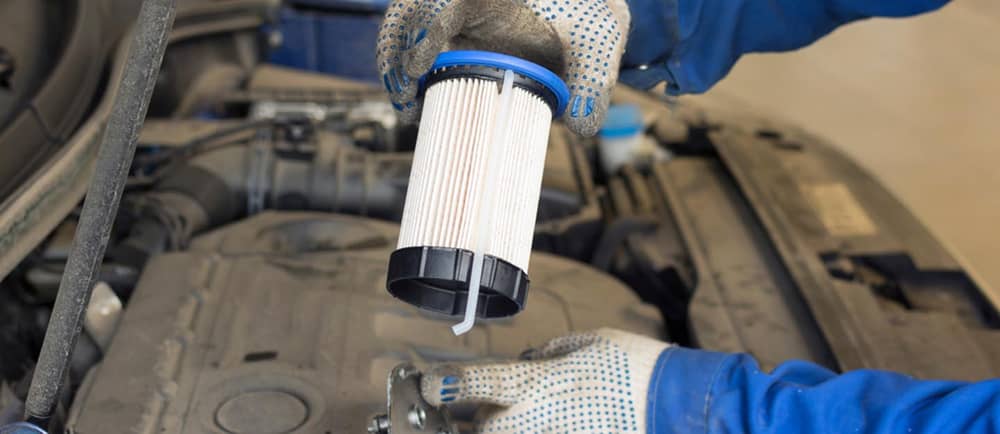A typical task in routine truck maintenance is changing the fuel filter on your vehicle. However, your truck wont start after fuel filter change?
Your car’s fuel filter is essential in keeping pollutants from being sucked in by the engine as it consumes fuel. This guarantees that your car uses only pure fuel and operates at peak efficiency.
The impurities that it keeps out of the engine of the car accumulate over time, necessitating a filter change. If this is the case, the filter needs to be replaced since else the engine won’t get enough fuel to function properly.
Once you replace the filter, the car’s performance ought to be at its top, but regrettably, there are times when things go wrong and the engine won’t start.
Some people have claimed that a fuel filter change can result in a truck not starting if done incorrectly. We hope to be able to give you the knowledge you need to make sure your truck runs properly once the gasoline filter has been changed.
Reasons For Truck Wont Start After Fuel Filter Change

After changing the fuel filter or making any other maintenance-related adjustments to the car, people frequently encounter the problem of the car not starting. Here are a few potential causes of the car not starting after the gasoline filter was changed.
Fail To Recirculate Your Fuel
The fuel lines are still empty after changing the fuel filter, and there is a potential that air will get jammed in the fuel system circuit, making the automobile unstartable.
To ensure that the engine receives the correct amount of gasoline, it is essential to prime the fuel filter and the system following a fuel filter change in order to eliminate any trapped air. This will help prevent hard starting issues.
Leaking Or Kinked Gasoline Hose
It would induce a significant fuel pressure drop into the fuel system circuit, impede fuel flow, and result in issues with the vehicle starting if you unintentionally kinked or damaged any fuel hoses when changing the fuel filter.
The leaking fuel filter may also be the culprit in this situation. Therefore, you must make sure that no connections leak.
Therefore, it is essential to inspect the whole length of the fuel supply hose. You should start from the fuel pump at the back of the car and end at the engine injectors, to spot any potential damage or signs of wear and tear. If necessary, the fuel supply hose should be replaced.
Mistaken Connection
Normally, the fuel filter permits unrestricted fuel flow in a single direction. The fuel filter typically has flow direction indicators to guarantee appropriate positioning.
If you’re not careful, you can accidentally swap the fuel hoses. Furthermore, you may inadvertently connect the engine’s filter inlet nozzle. This would have an effect on the engine’s ability to accept gasoline. As a result, if the fuel filter is not properly installed after being replaced, the car will not start.
Exhausted Battery
Since the car needs a lot of cranking amps to start, you should jumpstart your car to make sure that battery drain is not the cause of the car starting issue after fuel filter change.
Bad Fuel Pump
A faulty fuel pump that has simply stopped working due to poor condition would be to blame if the in-tank fuel pump is not delivering the engine with gasoline at the proper pressure and flow rate.
After a certain amount of miles, the fuel pump develops a problem due to its rotary components.
If the fuel pump begins sucking unfiltered fuel directly from the fuel tank through the vapor jet port when the fuel strainer becomes severely blocked, the fuel pump also becomes entangled with foreign materials.
If the fuel pump, which is necessary for the vehicle to start, fails to feed fuel in accordance with engine demand, the car won’t start even if the fuel filter is changed. A new fuel pump must be installed instead.
Faulty Fuel Pump Priming
In that case, it’s time to conduct one. Fuel pump priming is necessary to create sufficient pressure in the fuel supply line following fuel filter replacement.
After changing the gasoline filter, the car won’t start if the pressure gauge reading indicates that there is low pressure because of an airlock in the system.
Each time the ignition key is turned on, the fuel pump is run for three seconds, pressurizing the fuel line circuit and supplying the engine with fuel.
Obstructed Fuel Strainer
Due to the unfiltered fuel that the fuel strainer passes on, the fuel filter may also be blocked at the same time as the fuel strainer. Either the delivery pressure will drop or the fuel flow will be blocked.
The location of the fuel filter or strainer is crucial. For the greatest pump performance, people frequently disagree on whether the fuel filter should be installed before or after the pump. However, this relies on the type of fuel filter, mesh size, and gasoline pump type.
Additionally, because the gasoline strainer is blocked, the in-tank fuel pump is forced to work harder, consumes more current, and eventually fails.
Therefore, if the car won’t start after replacing the fuel filter, it is required to verify the condition and replace the fuel strainer with a new one.
Poor Relays
Check the relevant relays, such as the fuel pump relay, starter relay, or ignition relay, to make sure the parts are receiving the necessary power supply for functioning.
If the defective relays are not replaced with new ones, the vehicle starting system components won’t receive power and the car won’t start even after replacing the gasoline filter.
Blowing Fuse
One of the common problems is that the fuse for the fuel pump can blow. The fuel pump fuse may have blown as a result of a failed fuel pump using more electricity to perform additional tasks and causing this.
Malfunctioning Fuel Pump Pressure Regulator
There are three different kinds of fuel pressure regulators. One is incorporated into the gasoline pump, which is positioned on the tank. A second is an inline fuel pressure regulator, which is situated between the fuel filter and the engine. The third is a gas rail fuel pressure regulator.
Unless the fuel pressure regulator is replaced with a new one, it will not sustain the pressure necessary for the atomization of the fuel. When it reaches the injector, which will result in issues starting the automobile.
Since you replaced the gasoline filter, it is quite easy to assume that the problem is there, but in fact, it might actually be with one of the other components of the engine.
Notes For Changing The Truck Fuel Filter

Changing a truck’s fuel filter is not difficult, but it is critical to follow the necessary technical requirements. When removing components, this helps prevent fuel injection and assures safe reassembly.
- Wear safety eyewear and tools such as gloves, shoes, and so on.
- Keep a fire extinguisher nearby in case of an unforeseen fire.
- Avoid using combustible objects in the area where the automotive fuel filter is replaced, such as lighters, smoking, or heat lamps.
- Keep the gasoline line away from the car’s exhaust manifold, and catalytic converter to ensure there are no sparks.
- When filtering automotive gasoline, light bulbs should be kept away from the pipeline if necessary.
- The fuel in the pipeline will have a high pressure of roughly 5.8 amps in some types. It is required to ruin the car gasoline filter before removing it during the implementation phase.
Frequently Asked Questions
Fuel does need time to get to the engine, and if the line is drained, it can take some time. The gasoline pump runs each time you try to start. In around four seconds, the pump will turn off if the engine doesn’t start.
Turn the ignition on for 30 seconds to prime the gasoline system, but do not start the engine. This enables the system to be primed by the pump. After turning off the ignition, give the car a 15-second crank. Repeat the first task and this one if necessary until it starts.
Open the fuel-line unions and bleed ports downstream of the pump one at a time, starting with the ones nearest to the pump, to expel air from the low-pressure side of the fuel system. Then, keep pumping until fuel, not air, runs out.
Final Thoughts
We hope we made an effort to compile all potential causes for the problem your truck wont start after fuel filter change and the notes when changing the fuel filter. If you have any questions, please comment in the box below and we’ll help you solve.
